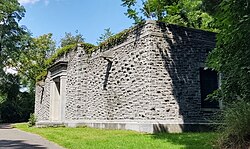Cayuga Heights is an upscale village in the town of Ithaca, in Tompkins County, New York, United States. The population was 4,114 at the 2020 census. The village is located adjacent to Cornell University and is home to many University faculty members, including its president.

Liberty Hyde Bailey was an American horticulturist and reformer of rural life. He was cofounder of the American Society for Horticultural Science. As an energetic reformer during the Progressive Era, he was instrumental in starting agricultural extension services, the 4-H movement, the nature study movement, parcel post and rural electrification. He was considered the father of rural sociology and rural journalism.

The New York State College of Agriculture and Life Sciences at Cornell University is one of Cornell University's four statutory colleges, and is the only College of Agriculture and Life Sciences in the Ivy League. With enrollment of approximately 3,100 undergraduate and 1,000 graduate students, CALS is Cornell's second-largest undergraduate college and the third-largest college of its kind in the United States.
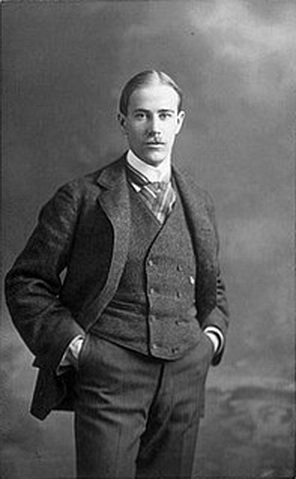
Louis Agassiz Fuertes was an American ornithologist, illustrator and artist who set the rigorous and current-day standards for ornithological art and naturalist depiction and is considered one of the most prolific American bird artists, second only to his guiding professional predecessor John James Audubon.

The Cornell Chimes is a 21-bell chime in McGraw Tower on the central campus of Cornell University, in Ithaca, New York, United States.
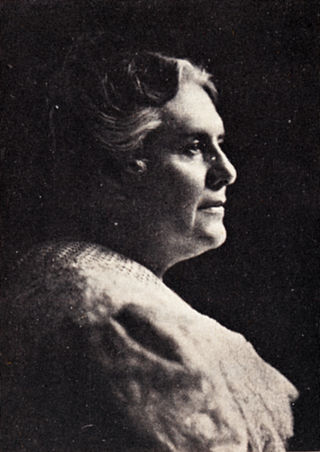
Anna Botsford Comstock was an acclaimed author, illustrator, and educator of natural studies. The first female professor at Cornell University, her over 900-page work, The Handbook of Nature Study (1911), is now in its 24th edition. Comstock was an American artist and wood engraver known for illustrating entomological text books with her husband, John Henry Comstock including their first joint effort, The Manual for the Study of Insects (1885). Comstock worked with Liberty Hyde Bailey, John Walton Spencer, Alice McCloskey, Julia Rogers, and Ada Georgia as part of the department of Nature Study at Cornell University. Together they wrote nature study curricula to develop a curiosity for, and education about, the surrounding natural world. Comstock also was a proponent for conservationism by instilling a love and appreciation of the natural world around us.

The Herbert F. Johnson Museum of Art is an art museum located on the northwest corner of the Arts Quad on the main campus of Cornell University in Ithaca, New York. Its collection includes two windows from Frank Lloyd Wright's Darwin D. Martin House, and more than 35,000 other works in the permanent collection. It was designed by architect I.M. Pei and is known for its distinctive concrete facade.

Schoellkopf Field is a 21,500-capacity stadium at Cornell University's Ithaca campus that opened in 1915 and is used for the Cornell Big Red football, sprint football and lacrosse teams. It is located just north of Cascadilla Creek on the southern end of the campus, next to Hoy Field and Lynah Rink; Schoellkopf Memorial Hall, adjacent to the stadium, contains the Robison Hall of Fame Room, the hall of fame for Cornell athletics.
Cascadilla School is a co-ed preparatory school in Ithaca, New York, United States. The school was established in 1876 as a tutoring and college preparatory school for Cornell University.
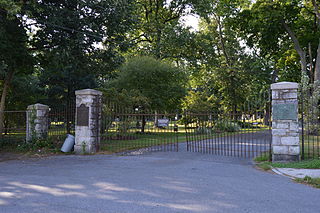
Harrisburg Cemetery, sometimes referred to as Mount Kalmia Cemetery, is a prominent rural cemetery and national historic district in Harrisburg, Pennsylvania, located at 13th and Liberty streets in the Allison Hill/East Harrisburg neighborhoods of the city. It was founded in 1845, though interments took place for many years before.

Sage Chapel is the non-denominational chapel on the campus of Cornell University in Ithaca, New York State which serves as the burial ground for many contributors to Cornell's history, including the founders of the university: Ezra Cornell and Andrew Dickson White as well as their wives. The building was gifted to the university by Henry William Sage and his wife. The chapel opened in 1875 and is located on Ho Plaza, across from Willard Straight Hall and next to John M. Olin Library, John McGraw Tower, and Barnes Hall.
William Henry Miller (1848–1922) was an American architect based in Ithaca, New York.
The New York State College of Forestry at Cornell was a statutory college established in 1898 at Cornell University to teach scientific forestry. The first four-year college of forestry in the country, it was defunded by the State of New York in 1903, over controversies involving the college's forestry practices in the Adirondacks. Forestry studies continued at Cornell even after the college's closing.
The New York State College of Forestry, the first professional school of forestry in North America, opened its doors at Cornell University, in Ithaca, New York, in the autumn of 1898., It was advocated for by Governor Frank S. Black, but after just a few years of operation, it was defunded in 1903, by Governor Benjamin B. Odell in response to public outcry over the College's controversial forestry practices in the Adirondacks.

Barnes Hall is a student-services building located in the center of the Cornell University campus in Ithaca, New York. It was built in 1887 in a Romanesque style and has 21,618 sq ft.

The Cayuga Nature Center (CNC) is an educational institution addressing nature and environmental issues. It is located on the west side of Cayuga Lake in Tompkins County, New York.
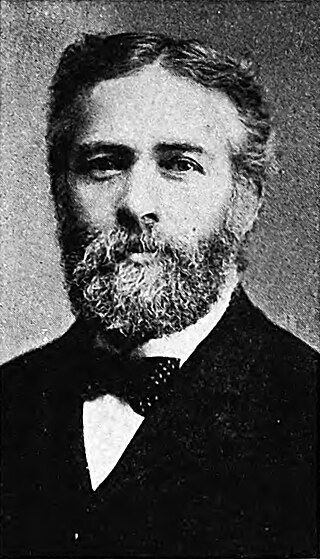
George Chapman Caldwell was an American chemist, horticulturalist, and instructor.
Ethel Zoe Bailey (1889-1983) was a U.S. botanist and the first curator of the Bailey Hortorium at Cornell University from 1935 to 1957. She created the Ethel Z. Bailey Horticultural Catalogue Collection and in 1912 was the first woman in Ithaca, New York to earn a driver's license.
Albert LeRoy Andrews (1878–1961) was a professor of Germanic philology and an avocational bryologist, known as "one of the world’s foremost bryologists and the American authority on Sphagnaceae." From 1922 to 1923 he was the president of the Sullivant Moss Society, renamed in 1970 the American Bryological and Lichenological Society.

Genera Palmarum is a botany reference book that gives a detailed overview of the systematic biology of the palm family (Arecaceae). The first edition of Genera Palmarum was published in 1987. The second edition was published in 2008, with a reprint published in 2014. Genera Palmarum is currently the most detailed monograph on palm taxonomy and systematics.
